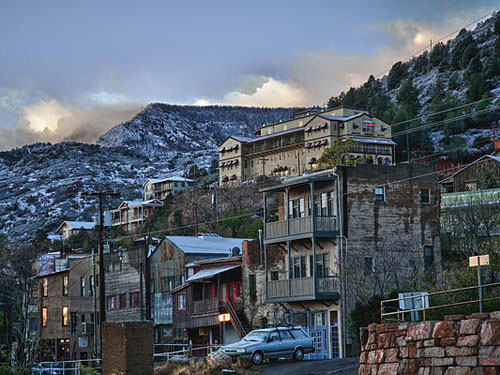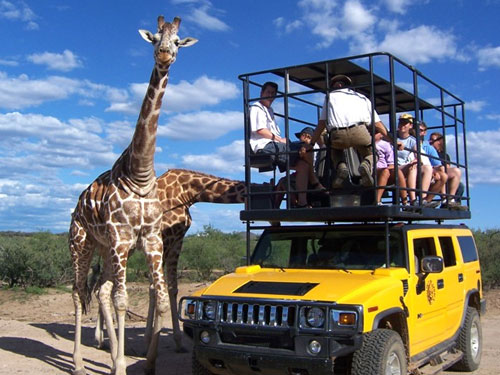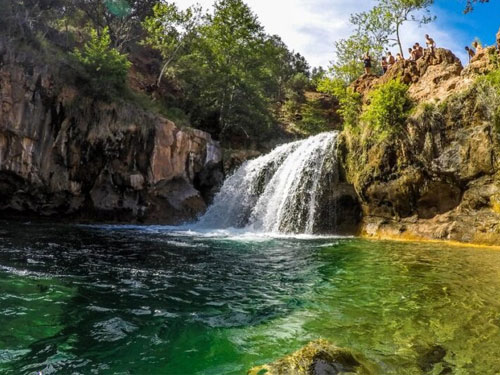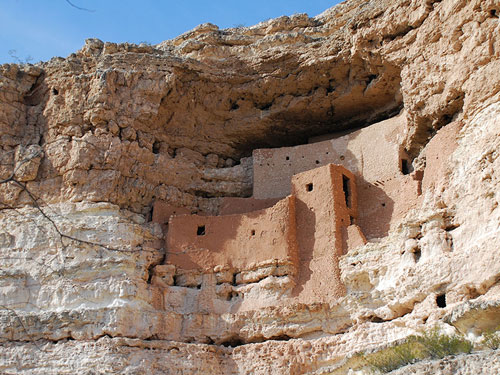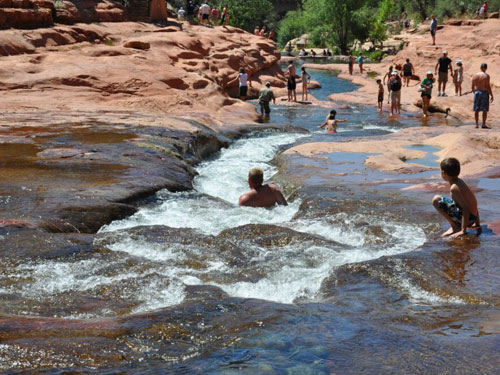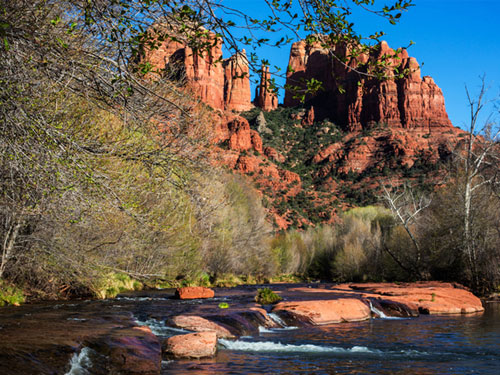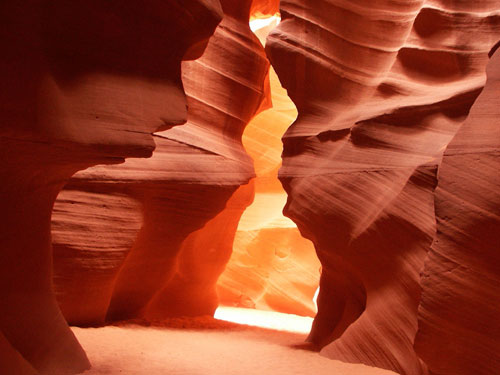MUST DO Activities Near Grand Canyon
Activities on this ultimate list are MUST DO’s on your next trip to the Grand Canyon. Experience everything this historical and beautiful area has to offer.
Jerome State Historic Park – Grand Canyon Activities
The Douglas Mansion has been an eye-catching landmark in Jerome since 1916, when James S. Douglas built it on the hill just above his Little Daisy Mine.
This former home is now a museum devoted to the history of the Jerome area and the Douglas family. The museum features photographs, artifacts and minerals in addition to a video presentation and a 3-D model of the town with its underground mines.
Additionally, there are more displays outside along with a picnic area offering a beautiful panoramic view of the Verde Valley.
Read More“Out of Africa” – Grand Canyon Activities
Located in the heart of the Verde Valley, the mission of Out of Africa Wildlife Park is to create the ultimate animal adventure for all ages, one steeped in fun, immersed in learning, and inspired by a living and colorful world of astonishing wildlife.
We strive to foster an appreciation of our planet’s wild areas and wondrous inhabitants by supporting and promoting conservation awareness and action, practicing exemplary animal care, providing education and learning experiences, and establishing broad community support, through a peaceful and interactive relationship with our animal friends, who touch our hearts.
Read MoreFossil Creek – Grand Canyon Activities
Fossil Creek is a Wild and Scenic River in central Arizona on lands managed by the Coconino and Tonto national forests. The creek flows from its source at Fossil Springs 14 miles to its confluence with the Verde River downstream of the historic and decommissioned Childs power plant. Fossil Creek is one of only two Wild and Scenic rivers in Arizona. At temperatures of 70 degrees Fahrenheit, water gushes out at 20,000 gallons per minute from springs at the bottom of a 1,600 foot deep canyon.
Over the years, these calcium-rich waters have laid down huge deposits of a material called travertine. That rock-like substance encases whatever happens to fall into the streambed – forming the fossil-like formations for which the area is named.
Fossil Creek is a rare riparian area within an arid landscape. Many plants and wildlife depend on Fossil Creek for habitat, including otters, beavers, leopard frogs and black hawks. Native fish populations have been successfully restored to some segments of Fossil Creek.
Read MoreMontezuma’s Castle – Grand Canyon Activities
On December 8, 1906, President Theodore Roosevelt celebrated the passage of the Antiquities Act by declaring four sites of historic and cultural significance as our nation’s first National Monuments. Among these was Montezuma Castle, which the President identified as a place “of the greatest ethnological value and scientific interest.” Although very few original artifacts remained in the structure due to intensive looting of the site, Roosevelt’s decision assured the continued protection of one of the best preserved prehistoric cliff dwellings in North America.
Montezuma Castle National Monument quickly became a destination for America’s first car-bound tourists. In 1933, “Castle A”, a 45-50 room, pueblo ruin was excavated, uncovering a wealth of artifacts and greatly enhanced our understanding of the Sinagua people who inhabited this riparian “oasis” along Beaver Creek for over 400 years. Early visitors to the monument were allowed access to the structure by climbing a series of ladders up the side of the limestone cliffs. However, due to extensive damage to this valuable cultural landmark, public access of the ruins was discontinued in 1951. Now, approximately 350,000 people a year gaze through the the windows of the past during a visit to Montezuma Castle. Even 600 years after their departure, the legacy of the Sinagua people continues to inspire the imaginations of this and future generations.
Read MoreSlide Rock State Park – Grand Canyon Activities
Slide Rock State Park, originally the Pendley Homestead, is a 43-acre historic apple farm located in Oak Creek Canyon. Frank L. Pendley, having arrived in the canyon in 1907, formally acquired the land under the Homestead Act in 1910. Due to his pioneering innovation, he succeeded where others failed by establishing a unique irrigation system still in use by the park today. This allowed Pendley to plant his first apple orchard in 1912, beginning the pattern of agricultural development that has dominated the site since that time. Pendley also grew garden produce and kept some livestock.
As one of the few homesteads left intact in the canyon today, Slide Rock State Park is a fine example of early agricultural development in Central Arizona. The site was also instrumental to the development of the tourism industry in Oak Creek Canyon. The completion of the canyon road in 1914 and the paving of the roadway in 1938 were strong influences in encouraging recreational use of the canyon. Hence, Pendley followed suit and in 1933, built rustic cabins to cater to vacationers and sightseers. Today’s visitors can still enjoy the fruits of Pendley’s labor. Historic cabins are available for viewing, and the creek offers the park’s namesake slide for adventures seekers and those looking for a place to cool off.
Read MoreChapel of the Holy Cross – Grand Canyon Activities
The Chapel of the Holy Cross, sitting high atop the red rocks in Sedona, Arizona, was inspired and commissioned by local rancher and sculptor Marguerite Brunswig Staude. In 1932 she was inspired to build such a church by the construction of the Empire State Building. Staude initially attempted to do this in Budapest, Hungary with the help of Lloyd Wright, son of architect Frank Lloyd Wright.With this unfortunate turn of events, she decided to build the church in her native home land, Arizona.
Richard Hein was chosen as project architect, and the design was executed by architect August K. Strotz, both from the firm of Anshen & Allen. The chapel is built on Coconino National Forest land; the late Senator Barry Goldwater assisted Staude in obtaining a special-use permit. The construction supervisor was Fred Courkos, who built the chapel in 18 months at a cost of $300,000. The chapel was completed in 1956.
Read MoreOak Creek Canyon – Grand Canyon Activities
Get your camera ready for this one, and don’t forget your swimsuit, hiking shoes, and fishing pole. Just south of Flagstaff, Arizona State Route 89A descends a breathtaking series of switchbacks into a scenic, smaller cousin of the Grand Canyon.
Known for colorful rocks and unique formations, Oak Creek Canyon is famous the world around for its spectacular scenery.
Read MoreRed Rock State Park – Grand Canyon Activities
Red Rock State Park is a 286 acre nature preserve and an environmental education center with stunning scenery. Trails throughout the park wind through manzanita and juniper to reach the rich banks of Oak Creek. Green meadows are framed by native vegetation and hills of red rock. The creek meanders through the park, creating a diverse riparian habitat abounding with plants and wildlife. This riparian habitat provides the setting and the opportunity for the park to offer a focus on environmental education.
Red Rock offers a variety of special programs for school groups and private groups. There are a number of daily and weekly park events. The park offers a visitors center, classroom, theater, park store, ramada and hiking trails.
Read MoreHorseshoe Bend – Grand Canyon Activities
Horseshoe Bend is the intimate Grand Canyon experience (although technically located in Glen Canyon.) The trailhead to this 3/4 mile hike is located just outside of Page, Arizona.
It overlooks one of the most spectacular views on the Colorado River, 4 miles south of the Glen Canyon Dam, and 7 miles north of mile zero of the Grand Canyon.
Read MoreWater Holes Canyon – Grand Canyon Activities
Water Holes is a branched drainage that forms several beautiful slot canyons, cutting through the red Navajo sandstone rocks around Lake Powell. It is only a few miles from Page and flows into the short section of Glen Canyon that remains intact; as with nearby Antelope Canyon, the watercourse extends either side of a main road (US 89) and becomes much deeper downstream, with a number of sheer drops.
Various narrow passageways both west and east of the road have exceptionally pretty rock formations with the curved, delicately colored sandstone characteristic of this region, here nicely illuminated as the canyon although often very narrow is in general not too deep for sunlight to be excluded. Also like Antelope, Water Holes becomes a wide sandy wash above the lower narrows but then splits into a number of upper tributaries, some of which also have slot sections, mostly quite short but still narrow, pretty, and varied in character.
Read More
